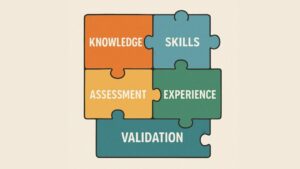 At PJLA (PJLA), we specialize in accreditation of labs and testing services, ensuring food, beverage, and consumer product safety and compliance. This Halloween, our focus turns to the treat bowl: how testing, allergen verification, and robust control help manufacturers, retailers and families enjoy the fun with confidence.
At PJLA (PJLA), we specialize in accreditation of labs and testing services, ensuring food, beverage, and consumer product safety and compliance. This Halloween, our focus turns to the treat bowl: how testing, allergen verification, and robust control help manufacturers, retailers and families enjoy the fun with confidence.
Why Food Testing Matters for Halloween Treats
Each year, candy and snack makers release special seasonal products like “fun sizes”, themed packaging, and limited editions. These variants may have different formulations or manufacturing lines, raising risks of unexpected allergens or cross-contact. In 2025, experts are echoing this concern. New York Family
For manufacturers and retailers, quality control and batch testing matter more than ever. For parents and families, label-reading and awareness are key.
Key Food Testing and Allergen Control Tips
For Manufacturers/Retailers:
- Validate that fun-size or holiday variants meet the same allergen control and labeling standards as regular products.
- Conduct allergen swab testing and verify certifications when using private label treats.
- Clearly label all packages, including mini sizes, with full ingredient panels and allergen disclaimers.
For Families:
- Don’t assume a mini size is identical to the regular bar. Check the label every time! FoodAllergy.org
- Avoid unlabeled items or homemade treats if you are managing a food allergy.
- Consider non-food treats to bypass allergen risk altogether, a point increasingly emphasized in 2025. Children’s Wisconsin
Manufacturers create the safely tested product; retailers distribute it; families consume or swap it. When all stakeholders play their part, Halloween becomes safer and smoother.
2025 Trends to Watch
- The expansion of the Teal Pumpkin Project (non-food treats) is driving stronger demand for “allergen-free” treat options. https://www.whsv.com
- More social-media and retail signage alerting trick-or-treaters to safe-house zones or non-food treat houses.
- Increased consumer expectation: limited-edition candies must have the same allergen rigor, or they will be rejected by allergy-sensitive households.
- Use of dedicated allergen-free manufacturing lines or certified nut-free facilities is no longer niche. It’s becoming mainstream in treat production.
Tips for Families Built on a Food-Testing Mindset
- Approach your candy haul like a quality sample: inspect, sort, verify.
- Retire any item with missing labels or ambiguous ingredient lists.
- Use your safe treats as “control samples” you trust.
- Consider hosting or attending a Halloween event where the hosts openly advertise allergen-safe or non-food treats.
At PJLA, we know that rigorous testing brings peace of mind and on Halloween night, that peace of mind means children can trick-or-treat, families can celebrate, and manufacturers and retailers can meet the promise of safe fun. Whether you’re producing the treats, lining the shelves, or testing the products, let’s make Halloween 2025 one where food safety, testing, and celebration all come together.
 In the world of accreditation, impartiality is everything. Without it, the credibility of any conformity assessment body (CAB), whether a testing or calibration laboratory, inspection agency, or certification body, quickly unravels. Yet, as PJLA’s Technical & International Business Development Manager Dr. George Anastasopoulos has observed through years of accreditation assessments, many CABs still treat impartiality as a simple compliance box to check rather than a living, breathing part of their management system.
In the world of accreditation, impartiality is everything. Without it, the credibility of any conformity assessment body (CAB), whether a testing or calibration laboratory, inspection agency, or certification body, quickly unravels. Yet, as PJLA’s Technical & International Business Development Manager Dr. George Anastasopoulos has observed through years of accreditation assessments, many CABs still treat impartiality as a simple compliance box to check rather than a living, breathing part of their management system. In his recent LinkedIn article, PJLA’s Technical & International Business Development Manager, Dr. George Anastasopoulos, reflects on why process-based auditing, though introduced with ISO 9001:2000, continues to challenge auditors/assessors more than two decades later.
In his recent LinkedIn article, PJLA’s Technical & International Business Development Manager, Dr. George Anastasopoulos, reflects on why process-based auditing, though introduced with ISO 9001:2000, continues to challenge auditors/assessors more than two decades later. Article from Dr. George Anastasopoulos
Article from Dr. George Anastasopoulos By Dr. George Anastasopoulos
By Dr. George Anastasopoulos

 We are proud to share that Dr. George Anastasopoulos is in the June 2025 edition of Quality Magazine. He is the Technical and International Business Development Manager at Perry Johnson Laboratory Accreditation, Inc. (PJLA). He titled his article “The Modified FINK Risk Analyzing Method for Conformity Assessment Bodies.” Dr. Anastasopoulos is a well-known leader in conformity assessment. He has decades of experience in laboratory accreditation, risk assessing, and quality management. His article presents a new way to evaluate risk for Conformity Assessment Bodies (CABs). It builds on the FINK model and changes it to fit the needs of accredited organizations better.
We are proud to share that Dr. George Anastasopoulos is in the June 2025 edition of Quality Magazine. He is the Technical and International Business Development Manager at Perry Johnson Laboratory Accreditation, Inc. (PJLA). He titled his article “The Modified FINK Risk Analyzing Method for Conformity Assessment Bodies.” Dr. Anastasopoulos is a well-known leader in conformity assessment. He has decades of experience in laboratory accreditation, risk assessing, and quality management. His article presents a new way to evaluate risk for Conformity Assessment Bodies (CABs). It builds on the FINK model and changes it to fit the needs of accredited organizations better. In “The Modified FINK Risk Analyzing Method for Conformity Assessment Bodies,” Dr. Anastasopoulos shares a useful method. This method helps CABs find, study, and handle operational risks. The modified model emphasizes:
In “The Modified FINK Risk Analyzing Method for Conformity Assessment Bodies,” Dr. Anastasopoulos shares a useful method. This method helps CABs find, study, and handle operational risks. The modified model emphasizes:
 Despite their importance, SMEs often encounter significant hurdles, such as limited resources and tough market competition. Accreditation can play a transformative role in helping them overcome these challenges. Through accredited conformity assessment, SMEs can demonstrate compliance with recognized standards, boost their reputation, access new markets, and gain the confidence of customers, regulators, and investors alike.
Despite their importance, SMEs often encounter significant hurdles, such as limited resources and tough market competition. Accreditation can play a transformative role in helping them overcome these challenges. Through accredited conformity assessment, SMEs can demonstrate compliance with recognized standards, boost their reputation, access new markets, and gain the confidence of customers, regulators, and investors alike. Perry Johnson Laboratory Accreditation, Inc. (PJLA) would like to extend a heartfelt thank you to everyone who stopped by our booth at the World Conference on Quality & Improvement (WCQI), held May 4–7, 2025, in Denver, CO. It was a pleasure connecting with so many professionals across the quality industry and engaging in insightful conversations about laboratory accreditation and quality assurance.
Perry Johnson Laboratory Accreditation, Inc. (PJLA) would like to extend a heartfelt thank you to everyone who stopped by our booth at the World Conference on Quality & Improvement (WCQI), held May 4–7, 2025, in Denver, CO. It was a pleasure connecting with so many professionals across the quality industry and engaging in insightful conversations about laboratory accreditation and quality assurance.